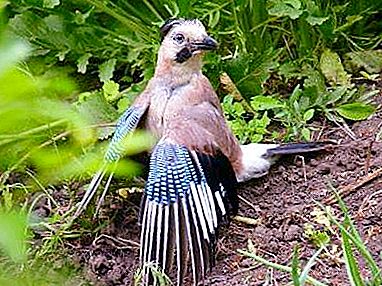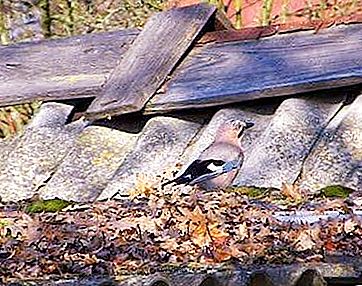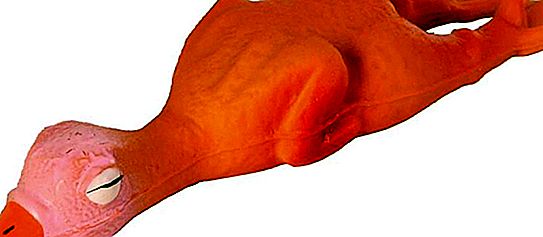Mockingjay - a daw-sized bird. It is easy to recognize by its grayish-white head and bright blue spots on wings with black ends. This is a very curious and noisy bird. Every rustle attracts her, which is why she is so disliked by hunters.

Seeing a man in the forest, a mockingjay makes a noise, as if alerting everyone about the impending danger. By the way, with excitement, feathers rise on her head with a small crest.
Why is she called a mockingbird? And all due to the fact that she knows how to skillfully imitate any sounds heard. This and bird singing, and dog barking, screeching saws and mournful meow. And if suddenly in the forest you heard something unusual, do not be alarmed - this is a mockingjay (photo on the right) with your tricks. The only time when she behaves calmly, even secretly, is the time of nesting.
The habitat of this bird is quite extensive: the northern regions of Africa, Europe, the Caucasus, Asia Minor, the southern part of Siberia, Korea, Sakhalin, Japan and Manchuria, China and northern Mongolia. Part of its population leads a sedentary lifestyle, and part - a migratory one. Nomadic jays can be observed during the fall and winter. Mockingjay lives in mixed, coniferous and deciduous forests, although it prefers deciduous forests more. In southern areas, it can also nest among shrubs.

In the early days of spring, birds create pairs. At this time, the males fly low over the trees, and their singing consists of sounds overheard in the forest. Basically, nests are found on middle-aged and young deciduous or coniferous trees. A nest is being built by both parents. This is a small tray with a diameter of 20 cm and a depth of 10 cm, made of thin twigs and lined with dry grass and elastic roots. It takes them a week to do this job.
From late April to late May, a mockingjay begins laying eggs. Most often in their nest there are 5 pieces, but there can be 7, 8, and even 10 eggs. Hatching occurs 17 days, with both parents. The entire period of feeding, adult birds have to work from the very early morning until late at night. They appear near the nest twice every hour. After 20 days, the chicks begin to fly.

Mockingjay has a fairly wide diet. The main plant foods are oak acorns. In addition, she feasts on raspberry, bird cherry, wild strawberry and mountain ash berries. He likes sunflower seeds, spruce, wheat, cucumber, oats, corn, peas and so on. From spring to autumn, she adds insects to her diet. The objects of her hunt are hornets, weevils, May beetles, leaf gnaws, silkworms, sawfly larvae, golden bronze and others. It can also feed on frogs, lizards, small rodents and does not shun small birds and their eggs.
For winter, a mockingjay loves harvesting acorns and hazelnuts. She hides them in several pieces in the leaves, under the bark of fallen trees and buries them in moss. Many reserves remain unused: either she forgets about them, or simply does not find them. Thus, the jay is engaged in useful business: with its help, oaks and other plants germinate far from native trees. But due to the fact that it ruins other people's nests, it is classified as a pest. Although in this regard, it causes minimal harm, since it mainly prefers plant foods.




